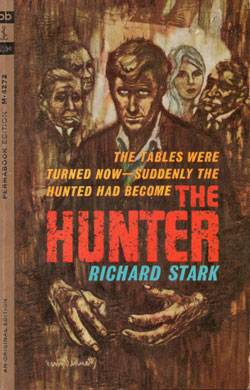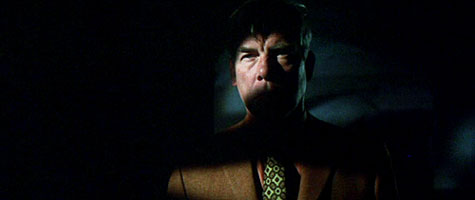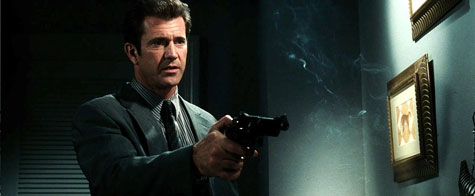 Parker has become one of the most celebrated characters in crime fiction. Over the course of 24 novels spanning four decades, this tough-talking, tougher-acting thief bulldozed his way through the years, never losing sight of his unique code of conduct.
Parker has become one of the most celebrated characters in crime fiction. Over the course of 24 novels spanning four decades, this tough-talking, tougher-acting thief bulldozed his way through the years, never losing sight of his unique code of conduct.
In the debut Parker novel, The Hunter from 1962, we meet a man who virtually created the antihero archetype. The Hunter also established the basic structure of most Parker novels—Parker is wronged after a job and seeks revenge at all costs.
While the formula would suffer from varying degrees of staleness over the course of the series, the template set out in The Hunter works like gangbusters to set up Parker’s underground world of thieves, con-men, grifters and crooks. Several regular characters would come and go through the series, and one, Grofield, even got four spinoff novels of his own.
Richard Stark is the alter ego of Donald Westlake, and the Stark persona allowed Westlake to take a decidedly darker tone with the Parker novels than in his other, more comedic work. Right from the start, Parker makes no illusions about his intention to recover the stolen loot he earned in a heist from Mal Resnick, who double-crossed him and left him for dead in a burning house.
Parker’s methods are what set him apart. He’s driven by a more brutal code of ethics than even Mike Hammer, who up until Parker was probably the toughest tough guy on the scene. But Hammer had justice in mind, Parker has revenge.
Bodies pile up at Parker’s hands, and he shows no remorse for his actions. He has reasons, and he feels justified by them—everyone else be damned if they don’t like it. Nothing will stand in his way, not even a woman he once loved.
The Hunter also establishes Stark/Westlake’s use of a fractured timeline. One of the more unique aspects of the Parker novels is this use of repeated action seen from different perspectives. Broken into Part 1, Part 2, and so on, the introduction of a new “Part” usually signals a rewind in time and some new information filled by seeing the same action from the other side of the hunt.
Also introduced is The Outfit—the ominous criminal organization Parker refuses to become a part of and who ends up being his nemesis for the first several Parker novels. Mal’s ties to The Outfit make him a formidable target, but Parker is not one to shy away from a head-on fight.
Parker is an absolute battering ram, as he relentlessly chases his missing money and the man who betrayed him. Parker wouldn’t soften a bit over the course of the next 23 novels to come.
In 1967, the first film adaptation of The Hunter appeared and was retitled Point Blank, with Lee Marvin as Parker. A highly regarded film, John Boorman’s adaptation plays out more like a fever dream than a faithful adaptation of the novel as written. Heavily influenced by European cinema of the 60’s, the film performed well, but not well enough to spawn a recurring Parker series of films.

In 1999, Mel Gibson stepped into the role of Parker for the film Payback, which hued more closely to Parker’s amoral relentlessness in The Hunter, but also failed to spawn a direct sequel.

Parker is not an easy protagonist to love. He is brutal, selfish, sexist, and lives a life firmly planted in lawlessness—maybe never more so than in The Hunter. But, if he sounds like your kind of man, The Hunter is essential reading for any crime fiction fan.
Three more Parker novels followed in the next year, with The Man with the Getaway Face and The Outfit making a tight trilogy, all stemming from the action in The Hunter—this before Parker settled into the formula that would serve him well until 2008, with a long break between 1974’s Butcher Moon and 1997’s aptly titled, The Comeback.
The Hunter should be on everyone’s short list of must-read novels. Its historical significance to the crime genre is on par with The Big Sleep or The Maltese Falcon. In the same way those novels introduced hardboiled noir to the world, The Hunter jumpstarted the era of the antihero that we still see ripples of today. It is action-packed storytelling with an innovative structure and one of the most unique and most celebrated characters in all of crime fiction.
Images via notesofafilmfanatic.com and hotflick.net
Eric Beetner is the author of more than a dozen novels including Rumrunners, The Devil Doesn't Want Me, Dig Two Graves, Run For The Money, andThe Year I Died Seven Times. His award-winning stories have appeared in over twenty anthologies including Unloaded: Crime Writers Writing Without Guns, which he created and edited. He is co-author (with JB Kohl) of One Too Many Blows To The Head, Borrowed Trouble, and Over Their Heads, and co-wrote The Backlist and The Short List with author Frank Zafiro. He lives in Los Angeles where he co-hosts the Noir At The Bar reading series. For more visit ericbeetner.com

Superb book. Read it many times. Very fine review, Eric.